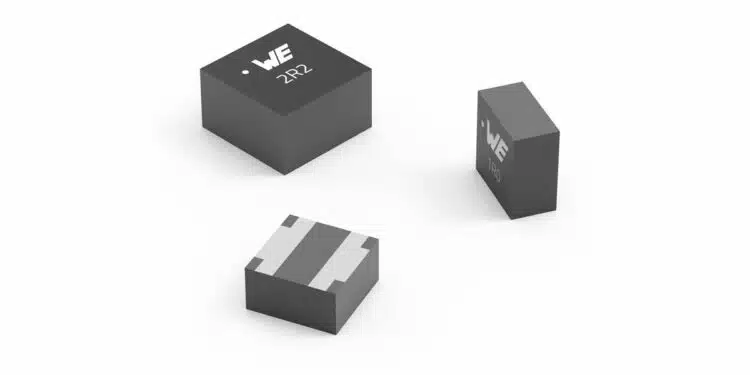Würth Elektronik offers its WE-MXGI – a power inductor with unprecedented properties of lowest resistance and lowest loss ideally suited for wide gap GaN and SiC DC/DC converter applications.
Extremely low core losses, combined with the lowest winding resistance (RDC value) of all comparable products on the market to date, give rise to maximum efficiency in DC/DC converter applications.
This was achieved by using an innovative core material and optimized winding geometry.
This makes the WE-MXGI magnetically shielded, compact SMT power inductor ideal for high-frequency DC/DC converter that utilize the latest GaN and SiC transistor technologies.
The new WE-MXGI power inductor gives developers the opportunity to develop more efficient designs, to convert higher power levels, and to make their designs more compact.
So the WE-MXGI series is ideal for applications such as DC/DC converters for field programmable gate arrays (FPGA), POL-converters, portable power supplies such as PDAs or digital cameras, mainboards and graphics cards, battery-powered devices, wireless communication devices, power supplies for smartphones, tablet PCs and other mobile devices.
The operating voltage is 80 V (DC) and the operating temperature ranges from -40°C to 125°C.
The new power inductors are available in 4020 and 5030 packages whose inductance values are 0.16 to 4.7 µH and 0.22 to 10 µH respectively with a saturation current of up to 28 A. Further sizes and values are in development.
WE-MXGI is now available. Free samples are provided.































